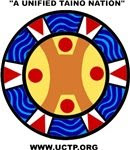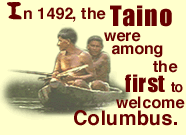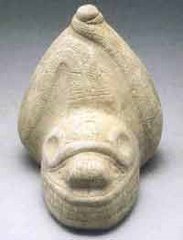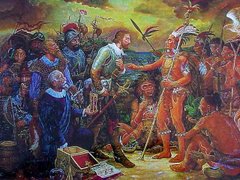Thursday, December 19, 2013
Hikotea is Taino
Thursday, November 14, 2013
Guaio (guayo) is Taino
Saturday, October 12, 2013
Batata and ahe (aje) are Taíno
Monday, September 02, 2013
Guayiga and Marunguey are Taino
Thursday, August 22, 2013
The Stingray and Taino Culture
Did You Know: Since ancient times, stingrays have been a part of the Caribbean’s marine environment and the cultures of the region’s Indigenous Peoples. Taíno and other Caribbean Indigenous Peoples, for example, would traditionally use the barbed spine located toward the bottom of a stingray’s tail in various ways. Stingray barbs would sometimes be used as tips for spears and arrows used for hunting or weapons, as well as for adornments like necklaces and bracelets. Like sharkskin, the rough skin of certain stingrays were also used as a grating tool to grind iuka (yuca/cassava/manioc) into a fine powder. Some Taino words for stingrays include Libusa, Lebisa, Sabina, and Chucho (spotted eagle ray). - UCTP Taino News © 2013
Wednesday, July 10, 2013
Arepa and the Taino
Did You Know: An arepa is a flat corn bread patty developed by Indigenous Peoples in Northern South America, but its use has spread throughout the Caribbean region for generations. An arepa can be made fresh or with dried corn, which is ground into flour and made into dough that can be cooked in different ways. If dried corn kernels are used, however, they are boiled and soaked in water over night to breakdown the “hull” of the corn. Some Indigenous Peoples' communities also add ground limestone or ashes to breakdown the hull. The term arepa is incorporated in the Taíno language today, but it is actually a “loan word” with its linguistic origin coming from the language of the Karina or “true” Carib peoples of mainland South America. – UCTP Taino News © 2013




2.jpg)






